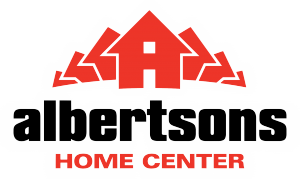Job Description
When you’re building or renovating your home, insulation certainly isn’t one the “fun” decisions – like paint colours, counter top materials, or flooring styles. In fact, it’s a decision that many home owners either make too quickly or outsource to someone else.
Sometimes, that means they’re not getting the right insulation for their needs … and they won’t realize until it’s already in action.
So here’s a Albertsons Home Center primer to choosing insulation for the different areas of your home. It’s not a glamorous decision to make, but you’ll thank yourself when you’re snug and cozy as the wind howls outside.
- Evaluate your current insulation: Is your home too chilly in the winter, with uneven warmth and out-of-control heating costs? Is it uncomfortably hot in the summer, with mold growing in the basement? Those are all signs of insulation problems.
- Do your homework. You’ve probably heard of R-values, but do you understand them? They’re how to determine the capacity of an insulating material to resist heat flow. The higher the R-value, the greater the insulating power.
- Don’t fixate on the price: Yes, of course, the price is something to consider. But it’s not a good idea to simply pick the cheapest possible insulation because you don’t really find it all that interesting. The insulation you choose will have a direct impact on your ongoing heating and cooling costs, as well as the environment.
- Know your zones: Different areas of your home call for different types of insulation. Think about how you and your family will be using each room of the house, in case certain rooms would benefit from sound absorbent insulation – we’re looking at the teenager with the drum set!
Here are a few examples of how different types of insulation work in different areas:
- Attics and exterior walls: You’ll want to look for semi-rigid batt insulation designed for exterior wood and steel stud walls – like ROXUL COMFORTBATT® – to keep the heat from escaping. It’s made from natural stone and recycled slag, so it’s a high-density insulation that will fit snugly into wall cavities and won’t slump over time.
- Interior walls, floors, ceilings: Choose insulation designed for interior walls, like ROXUL SAFE’n’SOUND® because it offers protection from fire and also absorbs sound. Stone wool has excellent fire ratings so it does not burn, and its higher density properties also make it an ideal solution for minimizing sound travelling between rooms.
- Basements: In order to insulate the entire building envelope – keeping your home’s heat from seeping into the cold ground – you should look at insulation sheathing board like ROXUL COMFORTBOARD™ that’s water repellent and fire resistant. Layer it with ROXUL COMFORTBATT® and ROXUL SAFE’n’SOUND® to keep your home cozy.
- Exposed floors: If you’re turning a porch into a comfortable sunroom or struggling with freezing cold cottage floors, you can insulate the floors to stop air and moisture from getting in. Insulating these exposed floors with ROXUL COMFORTBATT® will also help eliminate condensation and mould growth, while reducing the risk of frozen pipes.
Remember, investing in quality insulation will pay itself pay in the long run because your energy bills can be lowered significantly.
If you have questions about choosing the right insulation, your friends at Albertsons Home Center are always here to help.
Happy insulating!




